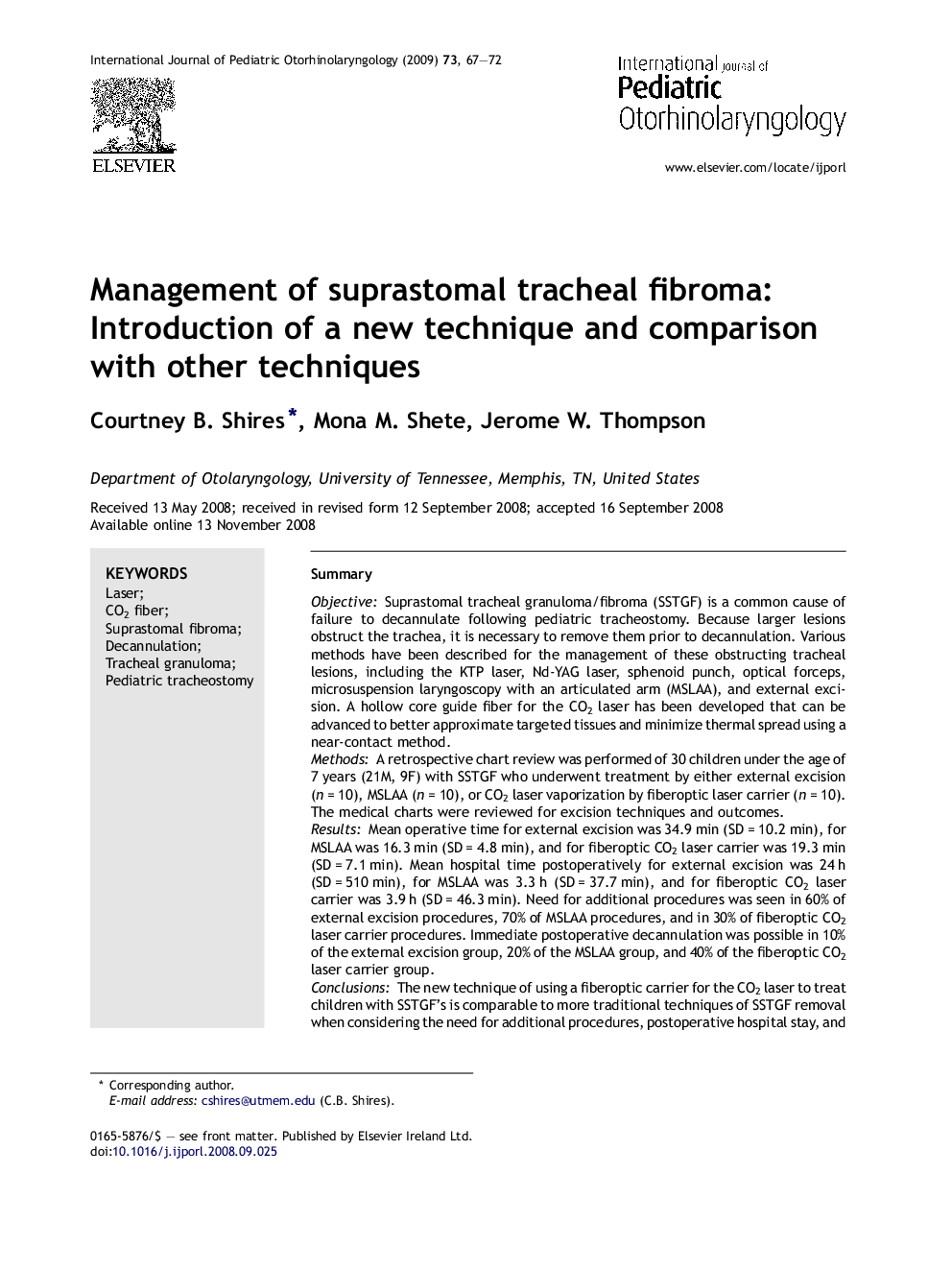| Article ID | Journal | Published Year | Pages | File Type |
|---|---|---|---|---|
| 4115389 | International Journal of Pediatric Otorhinolaryngology | 2009 | 6 Pages |
SummaryObjectiveSuprastomal tracheal granuloma/fibroma (SSTGF) is a common cause of failure to decannulate following pediatric tracheostomy. Because larger lesions obstruct the trachea, it is necessary to remove them prior to decannulation. Various methods have been described for the management of these obstructing tracheal lesions, including the KTP laser, Nd-YAG laser, sphenoid punch, optical forceps, microsuspension laryngoscopy with an articulated arm (MSLAA), and external excision. A hollow core guide fiber for the CO2 laser has been developed that can be advanced to better approximate targeted tissues and minimize thermal spread using a near-contact method.MethodsA retrospective chart review was performed of 30 children under the age of 7 years (21M, 9F) with SSTGF who underwent treatment by either external excision (n = 10), MSLAA (n = 10), or CO2 laser vaporization by fiberoptic laser carrier (n = 10). The medical charts were reviewed for excision techniques and outcomes.ResultsMean operative time for external excision was 34.9 min (SD = 10.2 min), for MSLAA was 16.3 min (SD = 4.8 min), and for fiberoptic CO2 laser carrier was 19.3 min (SD = 7.1 min). Mean hospital time postoperatively for external excision was 24 h (SD = 510 min), for MSLAA was 3.3 h (SD = 37.7 min), and for fiberoptic CO2 laser carrier was 3.9 h (SD = 46.3 min). Need for additional procedures was seen in 60% of external excision procedures, 70% of MSLAA procedures, and in 30% of fiberoptic CO2 laser carrier procedures. Immediate postoperative decannulation was possible in 10% of the external excision group, 20% of the MSLAA group, and 40% of the fiberoptic CO2 laser carrier group.ConclusionsThe new technique of using a fiberoptic carrier for the CO2 laser to treat children with SSTGF's is comparable to more traditional techniques of SSTGF removal when considering the need for additional procedures, postoperative hospital stay, and percentage of immediate postoperative decannulation and provides another useful tool in the armamentarium of the surgeon in treating SSTGF's.
